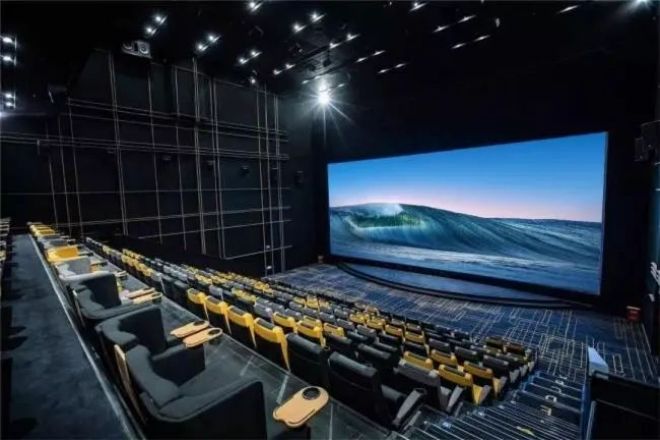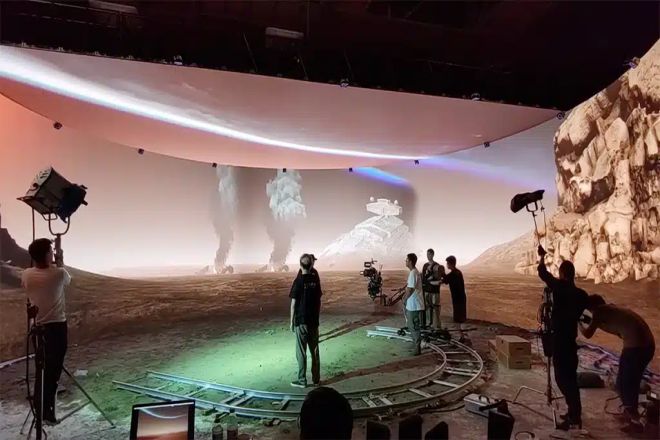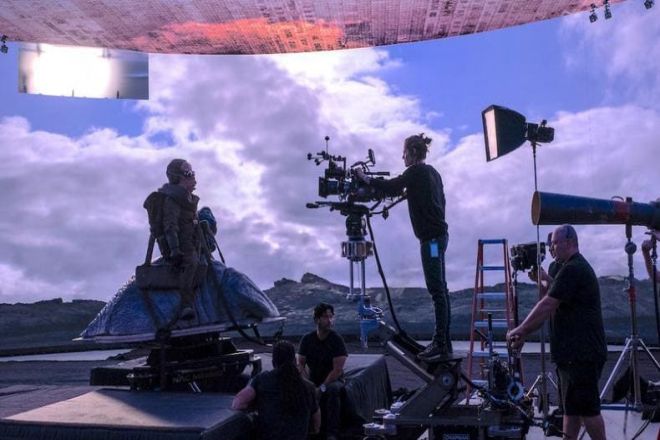介绍

Today, with the rapid advancement of technology, every leap in display technology has a profound impact on our lifestyle and entertainment experience.
LED显示屏, as a shining pearl of modern display technology, has gradually occupied a leading position in television, movies, and even the entire audio-visual entertainment industry with its excellent display effect, powerful technical performance, and wide application potential since its birth. A place.
From the initial simple display function to today’s high-definition, high dynamic range (HDR), and even ultra-high definition (UHD) displays, LED displays have not only witnessed the rapid development of display technology but also led a new round of the industry with its unique charm. Change.
1. The relationship between today's film industry and LED displays
Today’s film industry has an increasingly close relationship with LED displays, which is mainly reflected in the following aspects:
- 技术创新:
LED display screens have received more and more attention in the global film industry due to their significant advantages, such as high brightness, high contrast, high resolution, energy saving, and environmental protection.
With the continuous innovation of technology, LED movie screens have achieved significant improvements in image quality, color reproduction, dynamic range, and other aspects, bringing unprecedented movie-watching enjoyment to global audiences.
- Application promotion:
Many internationally renowned cinema lines have begun to adopt LED movie screens, especially in high-end giant screen halls and specialty theaters. These LED movie screens not only improve the screening quality of the theater but also attract a large number of audiences to experience it.
1). International standards and certifications
- International standards:
In order to ensure the standardized application of LED movie screens around the world, international standardization organizations and industry associations have formulated relevant standards. These standards cover many aspects such as image quality, color, and brightness, and provide technical guidance and specifications for the global promotion of LED movie screens.
- Industry certification:
Although specific industry certification systems may vary from region to region, globally recognized industry certification standards, such as DCI (Digital Cinema Initiatives) certification, provide a strong guarantee for the application of LED movie screens in the global film market.
2). International cooperation and ecological construction
- International cooperation:
The development of LED movie screens is inseparable from the close cooperation between upstream and downstream enterprises in the global industry chain. International technical exchanges, resource sharing, and market expansion cooperation provide strong support for the global application of LED movie screens.
- Ecological construction:
With the widespread application of LED movie screens around the world, an ecosystem surrounding LED movie screens is gradually forming. This ecosystem covers content production, projection equipment, theater operations and other aspects, jointly promoting the transformation and upgrading of the global film industry.
3). Market trends and prospects
- 市场走向:
As an emerging technology, LED movie screens are showing strong growth momentum in the global movie market. As technology continues to mature and costs gradually decrease, LED movie screens are expected to be popularized and applied in more countries and regions.
- Development prospects:
In the future, LED movie screens will play a more important role in the global film industry. It will not only enhance the movie-watching experience of global audiences but also promote the digital transformation and intelligent development of the film industry. At the same time, with the continuous improvement of the technical strength of internationally renowned LED display manufacturers and the expansion of market share, LED movie screens will occupy a more important position in the global market.
2. What are the specific applications of LED displays in photography?

LED display screens are widely used in shooting, especially in film and television production, advertising shooting, virtual shooting, and other fields. Its unique advantages have brought revolutionary changes to the shooting process. The following are the specific applications of LED display screens in photography:
1). Video making
- Background simulation:
The LED display screen can simulate various complex scenes and light effects, such as sunrise and sunset, rainy weather, city night scenes, etc., providing actors with a realistic shooting environment, which helps to enhance the realism and immersion of the performance.
The high-resolution and high-refresh-rate LED display ensures that the scene remains clear and detailed when viewed at close range, reducing the workload of post-production, such as green screen keying.
- Live preview:
During the shooting process, the LED display screen can realize a real-time preview function. The director and photographer can instantly see the shooting effect, thereby quickly adjusting the shooting angle, lighting arrangement, etc., to improve shooting efficiency.
- Cost Control:
Using an LED display as a shooting background can significantly reduce the cost of building a real scene while also reducing shooting delays and additional costs caused by weather, time, and other factors.
2). Advertising shoot
- Product display:
LED displays can simulate various product display environments, such as shopping malls, outdoor billboards, etc., providing a realistic background for advertising shooting and making products more prominent and attractive.
- 动态效果:
Using the dynamic display effect of LED displays, you can create more vivid and interesting advertising content, attract the audience’s attention, and improve the communication effect of advertising.
3). Virtual shooting (XR/VR)
- Extended Reality (XR) Capture:
In XR virtual shooting, an LED display screen, as an important visual element, can provide a more realistic sense of reality and space. Through splicing, bending, stretching, and other technologies, LED displays can achieve flexible and diverse picture expressions and better shape the three-dimensional sense of virtual space.
The combination of real-time rendered virtual scenes and LED displays allows actors to perform in real-time in a virtual environment, greatly improving the authenticity and immersion of filming.
- 实时互动:
In XR shooting, the LED display screen can also realize real-time interaction with the actors, such as adjusting the background image according to the actor’s movements and positions, making the shooting process more flexible and efficient.
3. The specific impact of LED display screens on the television and film industry
1). Improvement of movie viewing experience
- Brighter picture:
With its high brightness characteristics, LED displays can present brighter images in theater environments. Compared with traditional projection systems, LED movie screens are not affected by ambient light and can maintain picture clarity and color saturation even in brighter rooms, thereby improving the audience’s viewing experience.
- More realistic colors:
The LED display screen uses red, green, and blue primary color LED lights as the light source, which can achieve wide color gamut coverage and present more realistic and rich colors. In addition, through precise color management and calibration, LED movie screens can ensure the accuracy of color reproduction, allowing viewers to experience more realistic color effects during movie viewing.
- 更高清晰度:
With the continuous advancement of technology, the pixel density of LED displays continues to increase, making the pictures more delicate and clear. In theaters, high-resolution LED movie screens can present finer image details, allowing the audience to experience a more shocking visual effect during the movie viewing process.
- Advantages of 3D effect presentation:
LED displays also have significant advantages in 3D effect presentation. Its high refresh rate and high dynamic contrast can ensure the smoothness and three-dimensionality of 3D images and reduce image smear and blur. At the same time, the wide viewing angle characteristics of the LED display also enable viewers to obtain a good 3D viewing experience at different positions, further enhancing the immersion of watching movies.
2). Innovations in Film Production and Exhibition
- Impact on film shooting:
LED display screens can be used as virtual backgrounds during movie shooting, providing actors with a realistic shooting environment. This technology is called LED virtual shooting display or XR (extended reality) shooting technology.
It enables film production teams to simulate various complex scenes and light effects in indoor environments, reducing the cost and risk of outdoor shooting while also improving shooting efficiency.
- Impact on post-production:
The introduction of HDR (High Dynamic Range) technology brings more possibilities to film shooting and post-production. The LED display can support the playback of HDR content, allowing the picture to show more details and levels in both bright and dark parts.
This requires the film production team to pay more attention to light and color processing during shooting and post-production to take full advantage of HDR technology.
- Impact on screening methods:
The introduction of LED movie screens has changed the way traditional cinemas are shown. Its high brightness and high contrast make the picture clearer and brighter, providing the audience with a better viewing experience.
At the same time, the energy efficiency ratio of LED movie screens is also higher, reducing projection costs. In addition, LED displays have a longer service life and lower maintenance costs, bringing higher economic benefits to theaters.
3). Promotion of industry standards and specifications
- The driving role of organizations such as DCI:
Organizations such as DCI (Digital Cinema Initiative) have played an important role in promoting the formulation of specifications for LED cinema screens.
They have formulated strict technical standards and certification processes to ensure that LED movie screens meet industry requirements in terms of brightness, color, resolution, etc.
The formulation of these specifications and standards will help the wide application and healthy development of LED movie screens in the film industry.
- Improvement of industry standards:
The introduction of LED displays has promoted the improvement of film industry standards. With the continuous advancement of technology and the continuous expansion of application scenarios, the film industry’s requirements for display equipment are becoming higher and higher.
LED movie screens have become one of the benchmark products in the industry with their excellent performance and wide application prospects, promoting the improvement and progress of the entire film industry’s technical level.
4. Challenges and opportunities faced

1). 技术挑战
- Sound transmission problem
When LED display screens are used in cinemas, sound transparency is an important technical problem. The traditional projection system uses a sound-transparent curtain, and the main channel speakers are placed behind the curtain to achieve a realistic sound effect.
However, due to the material and structure of the LED display, it is difficult to achieve a sound-transparent effect. In order to solve this problem, LED display manufacturers need to develop new technical means, such as using special acoustic materials or designs to improve the penetration and uniformity of sound effects so that audiences can get better sound during the movie viewing process experience.
- Anti-piracy mechanism
In a theater environment, protection against piracy is an important security issue. As a digital display device, LED display screens have the risk of being illegally copied during data transmission and storage.
In order to ensure the copyright security of movie content, LED displays need to integrate a more complete anti-piracy mechanism. This includes the use of encryption technology, digital watermark technology, and other means to ensure that film content is not illegally copied and disseminated during transmission and display.
- High-cost issue
The high cost of LED movie screens is one of the important factors restricting their popularity. High R&D costs, production costs, and marketing costs make LED movie screens relatively expensive and difficult to be accepted by all theaters.
In order to reduce costs, LED display manufacturers need to continuously innovate technology and improve production efficiency while seeking policy support, such as government subsidies and tax incentives, to reduce the economic burden on enterprises.
In addition, as market demand increases and technology continues to mature, the large-scale production of LED movie screens is expected to reduce unit costs and further promote its popularity.
2). Market opportunity
- Cinema upgrade market
With the continuous development of the film industry, theater upgrades have become an important market trend.
Traditional projection systems have been unable to meet the audience’s demand for a high-quality viewing experience, and LED movie screens have become the first choice for theater upgrades due to their advantages, such as high brightness, high contrast, and high definition.
With the continuous advancement of technology and the gradual reduction of costs, the application prospects of LED movie screens in the theater upgrade market will become increasingly broad.
- Home theater market
With the improvement of people’s living standards and changes in consumption concepts, the home theater market is gradually emerging. LED display screens have become a popular choice in the home theater market with their excellent display effects and flexible application scenarios.
In the future, with the continuous development of smart homes and Internet of Things technology, the application of LED displays in the home theater market will become more extensive and in-depth.
- Industrial chain development opportunities
As a representative of the new generation of display technology, LED display screens have an industrial chain that involves many fields, including LED chip manufacturing, packaging and testing, display drivers, system integration, etc.
As the LED display market continues to expand and its application fields continue to expand, related industry chain companies will usher in new development opportunities. At the same time, the support of government policies and the increase in market demand will further promote the coordinated development of upstream and downstream enterprises in the industrial chain and form a complete industrial ecological system.
结论
To sum up, the birth of LED display screens has undoubtedly brought unprecedented changes and opportunities to television, film, and other industries. It not only greatly enriches our movie-watching experience and allows the artistic charm of movies to be more vividly displayed but also promotes the continuous advancement of film production technology and the diversified development of screening methods.
Facing the future, we have reason to believe that as technology continues to mature and application scenarios continue to expand, LED displays will show their unlimited potential in more fields and become an important force in promoting the development of the audio-visual entertainment industry and even the entire technology industry.
最后,如果你想了解有关LED显示屏的更多信息, 请与我们联系。
